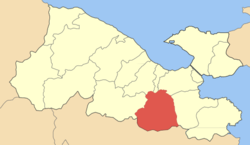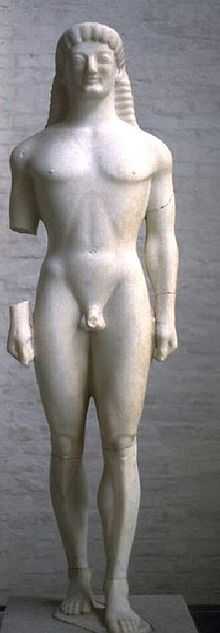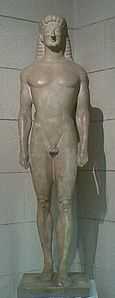Tenea
| Tenea Τενέα | |
|---|---|
 Tenea | |
|
Location within the regional unit  | |
| Coordinates: 37°48′N 22°52′E / 37.800°N 22.867°ECoordinates: 37°48′N 22°52′E / 37.800°N 22.867°E | |
| Country | Greece |
| Administrative region | Peloponnese |
| Regional unit | Corinthia |
| Municipality | Corinth |
| Elevation | 290 m (950 ft) |
| Population (2011)[1] | |
| • Municipal unit | 5,084 |
| Time zone | EET (UTC+2) |
| • Summer (DST) | EEST (UTC+3) |
| Postal code | 200 08 |
| Area code(s) | 27410 |
| Vehicle registration | ΚΡ |


Tenea (Greek: Τενέα) is an ancient city and a former municipality in Corinthia, Peloponnese, Greece. Since the 2011 local government reform it is part of the municipality Corinth, of which it is a municipal unit.[2] The seat of the municipality was in Chiliomodi. Ancient Tenea was established approximately 15 kilometres SE of Corinth and 20 kilometres NE of Mycenae shortly after the Trojan War. It is believed that the first inhabitants were Trojans prisoners of war to whom Agamemnon permitted to build their own town. Hence the name Tenea resembles that of Tenedos, their home-town. Tenea and Rome, according to the Aeneid of Virgil, are two historical cities known to be associated with Trojan ancestry following the Trojan War. Corinthians and Teneans in 734 or 733 BC under the leadership of Archias established the joint colony of Syracuse in Sicily, the homeland of Archimedes.
Historical Accounts
Mention of Tenea was made by Strabo
|
Tenea, also, is in Korinthia, and in it is a temple of the Apollon Teneatos; and it is said that most of the colonists who accompanied Archias, the leader of the colonists to Syracuse, set out from there, and that afterwards Tenea prospered more than the other settlements, and finally even had a government of its own, and, revolting from the Corinthians, joined the Romans, and endured after the destruction of Corinth. And it seems, also, that there is a kinship between the peoples of Tenedos and Tenea, through Tennes the son of Kyknos, as Aristotle says; and the similarity in the worship of Apollon among the two peoples affords strong indications of such kinship. |
| Strabo, (8.6.22) |
and Pausanias
|
Such is the account I heard of the Asopus. When you have turned from the Acrocorinthus into the mountain road you see the Teneatic gate and a sanctuary of Eilethyia. The town called Tenea is just about sixty stades distant. The inhabitants say that they are Trojans who were taken prisoners in Tenedos by the Greeks, and were permitted by Agamemnon to dwell in their present home. For this reason they honor Apollo more than any other god. |
| Pausanias, Description of Greece,[3] |
Archaeological findings
Ruins of Tenea can still be found one kilometre south of Chiliomodi. Some of the archaeological findings are located today in the Archaeological Museum of Ancient Corinth. The most famous finding, the statue from Tenea, known as Kouros of Tenea (c. 550 BC), which was found near Athikia in 1846, today stands in the Glyptothek of Munich. It is a great example of the 6th century BC Greek sculpture and also example of the so-called Aeginetean[4] or archaic smile.
 Kouros of Tenea with the archaic smile |
 Apollo of Tenea in the Pushkin Museum |
|
Subdivisions
The municipal unit Tenea is subdivided into the following communities (constituent villages in brackets):
- Agionori
- Agios Vasileios
- Chiliomodi
- Klenia
- Koutalas (Koutalas, Mapsos, Spathovouni)
- Stefani
Historical population
| Year | Population |
|---|---|
| 1991 | 5,245 |
| 2001 | 5,136 |
| 2011 | 5,084 |
See also
- Gallery and description [in Greek] of monuments in and around Tenea.
- List of traditional Greek place names
References
- ↑ "Detailed census results 2011" (in Greek).
- ↑ Kallikratis law Greece Ministry of Interior (Greek)
- ↑ Pausanias, Description of Greece 2.5.4 at Perseus Project.
- ↑ A History of Sculpture by Harold North Fowler
External links
 |
Vocha | Assos-Lechaio | Corinth |  |
| Nemea | |
Saronikos | ||
| ||||
| | ||||
| Mykines |
| ||||||||||||||||||||||